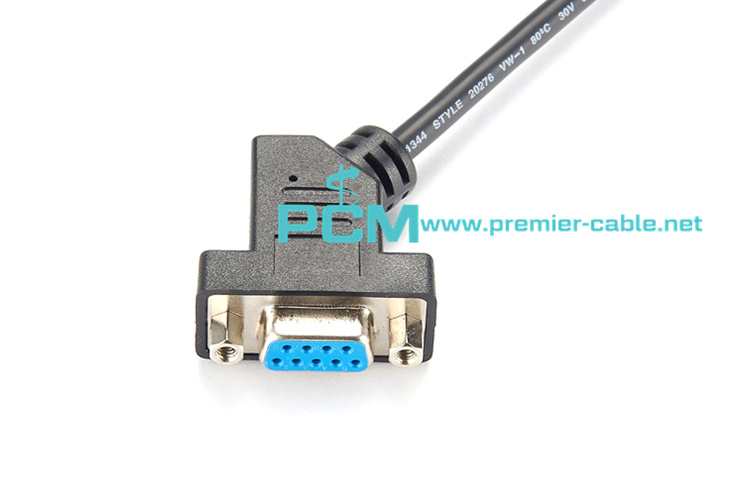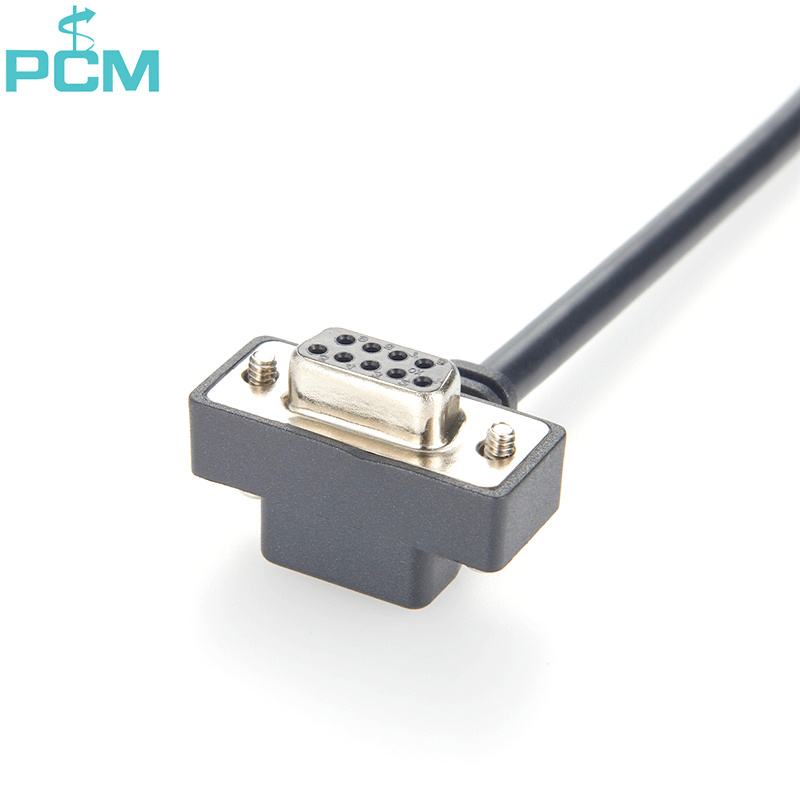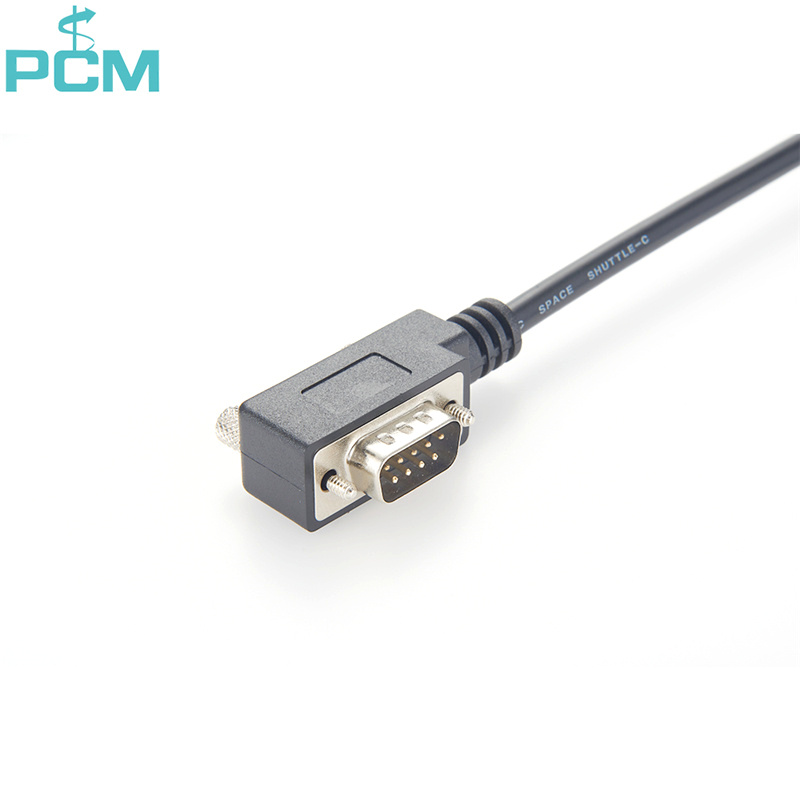 Esperanto
Esperanto
 Shqiptare
Shqiptare
 Euskara
Euskara
 Zulu
Zulu
 Latinus
Latinus
 Cymraeg
Cymraeg
 தமிழ்
தமிழ்
 Slovak
Slovak
 Slovak
Slovak
 Afrikaans
Afrikaans
News Center
What is the difference between DB9 and RS232?
Publish:
2023-03-21 10:31
Source:
www.premier-cable.net
DB9 and RS232 are not the same thing. DB9 belongs to the connector model, while RS232 belongs to a communication protocol. Follow our Premier Cable to learn more different between them.

1. DB9
DB9 refers to following type of connector, which has 9 pins. According to the number of interfaces, it is subdivided into Type A (15 pins), Type B (25 pins), Type C (37 pins), Type D (50 pins), and Type E (9 pins). The common computer parallel port is a DB25 pin connector, while the serial port should be a DE9 pin connector. Generally, only three ports, rx, tx, and Gnd, are used for communication.
Due to the early use of DB25 pin connectors for both serial and parallel ports in computers, people used to write down the letters B and D together as a common name for a D-type interface. As a result, after the computer serial port was changed to a 9-pin interface, people used DB9 instead of DE9 to refer to the 9-pin interface. The result of further promotion of this habit is that nowadays people use DBxx to represent D-type interfaces, and the number xx refers to the number of pins of the interface.
Common DB interfaces on computers include:
Serial communication interface RS232 9-pin -- DB9
Display VGA 15-pin -- DB15
Parallel printer LPT 25-pin -- DB25

2. RS232
RS232 refers to a communication protocol.
RS232 has the following electrical characteristics:
1) The maximum distance for RS-232 serial communication is 50 feet
2) RS232 can achieve bidirectional transmission and full duplex communication, with a maximum transmission rate of 20kbps
3) The digital quantity transmitted on RS-232C adopts negative logic and is symmetrical with the ground.
4) Logic 1: -3 ~ -15V, logic 0: +3~ +15V
Different encoding mechanisms cannot be mixed. For example, RS-232-C cannot be directly connected to RS-422 or RS-485 interfaces. There are specialized protocol converters available on the market that must be connected through the converter.
Our Premier Cable provides different angle DB9 serial RS232 RS485 RS422 cable for chosse: 45° Angle, 90° Angle, Left Angle, Right Angle, Up Angle, Down Angle. Whatever you are looking for, you can find it out on our Premier Cable. Leave us message now for your customized.

Related News
What is a terminal block used for?
While there are many factors to consider when designing an overall system, terminal blocks are an optimal solution for complex electrical system connections. With a variety of color options and configurations, Premier Cable’ terminal blocks offer a range of options to meet your design challenges.
CAN-bus has been widely used in various automation control systems. For example, CAN-bus has incomparable advantages in various fields such as automotive electronics, automatic control, smart buildings, power systems, and security monitoring.
Introduction to M12 connector pin coding
M12 encoding types are A encoding, B encoding, D encoding and X encoding. A-code, B-code and X-code are some of the earliest developed and longest-available M12 connectors. The latest M12 coding types currently under development are K coding for AC and L coding for PROFINET DC.
Cables – What are the correct cable sizes for an NMEA 2000 network?
The three different sizes of NMEA 2000 certified DeviceNet standard cabling are "micro," "mid," and "mini."
What are the advantages of NMEA 2000?
The Premier Cable Starter Kits provide everything you need to get to create a basic NMEA 2000 network from scratch.
The role of DeviceNet terminal resistor
DeviceNet_network is a fieldbus network protocol based on Controller Area Network (CAN). In the DeviceNet network, the terminal resistor plays the role of compensation and protection for signal transmission. The function of the terminal resistor is to eliminate signal reflection and interference and ensure the signal transmission quality.
